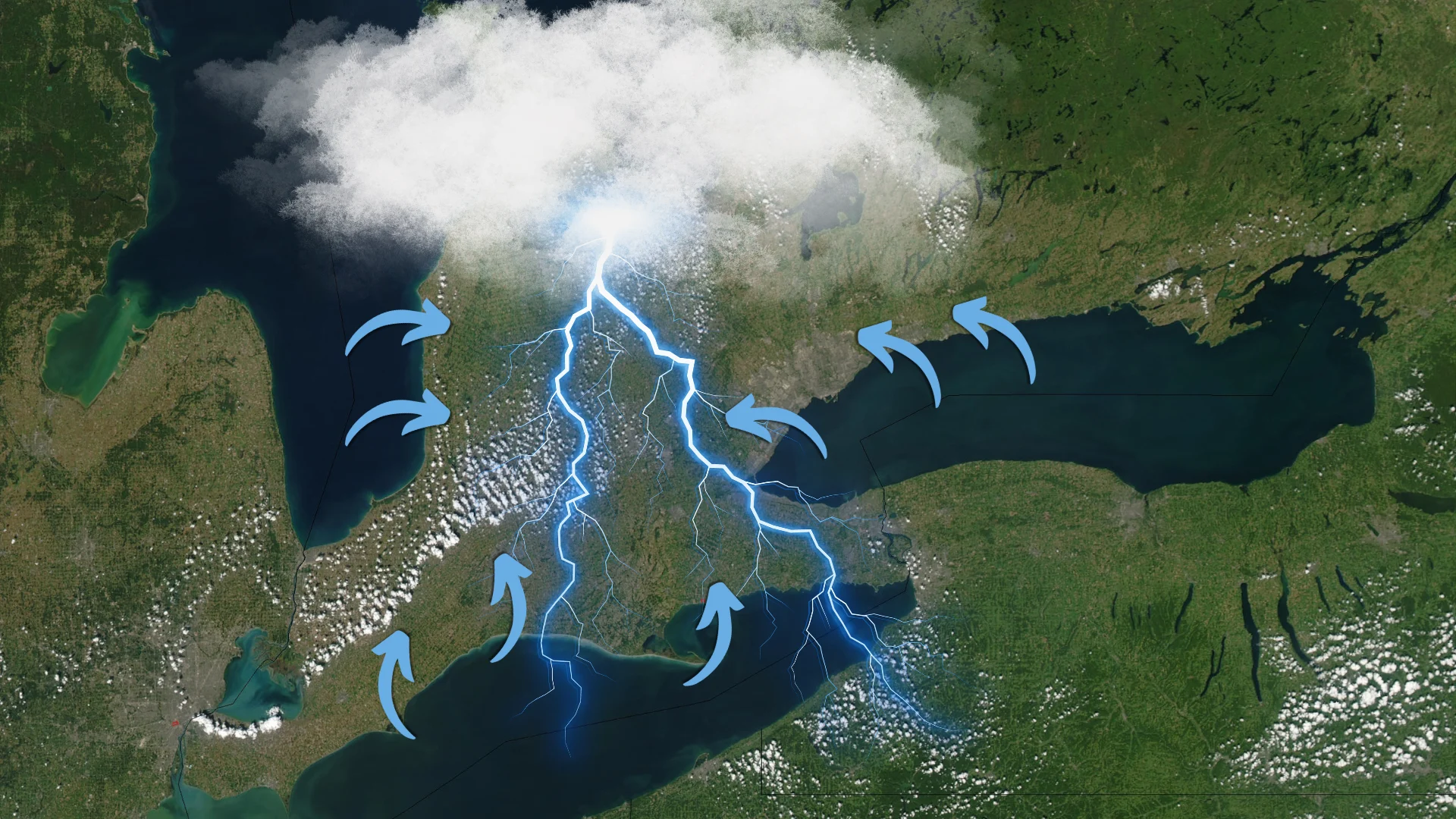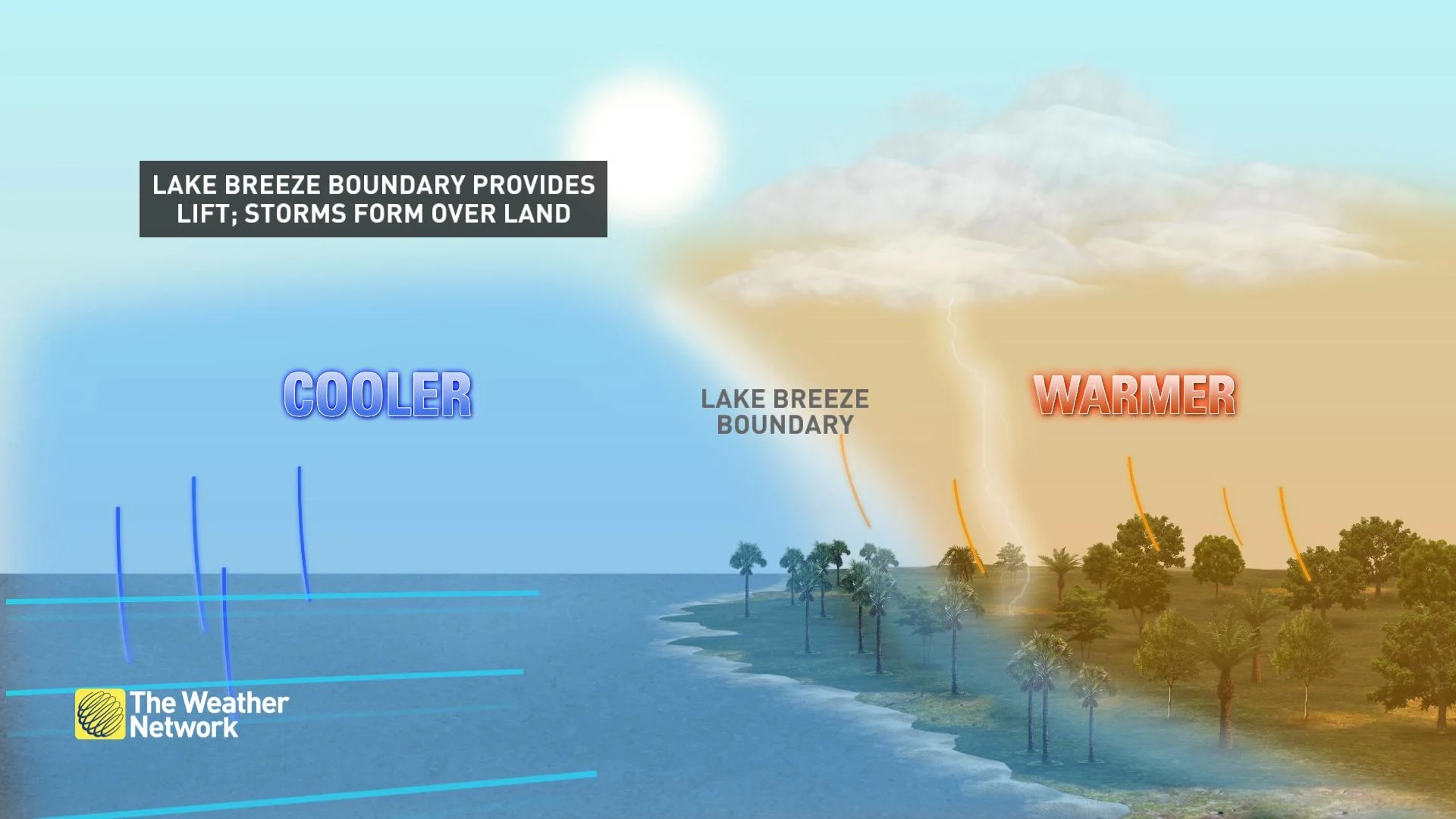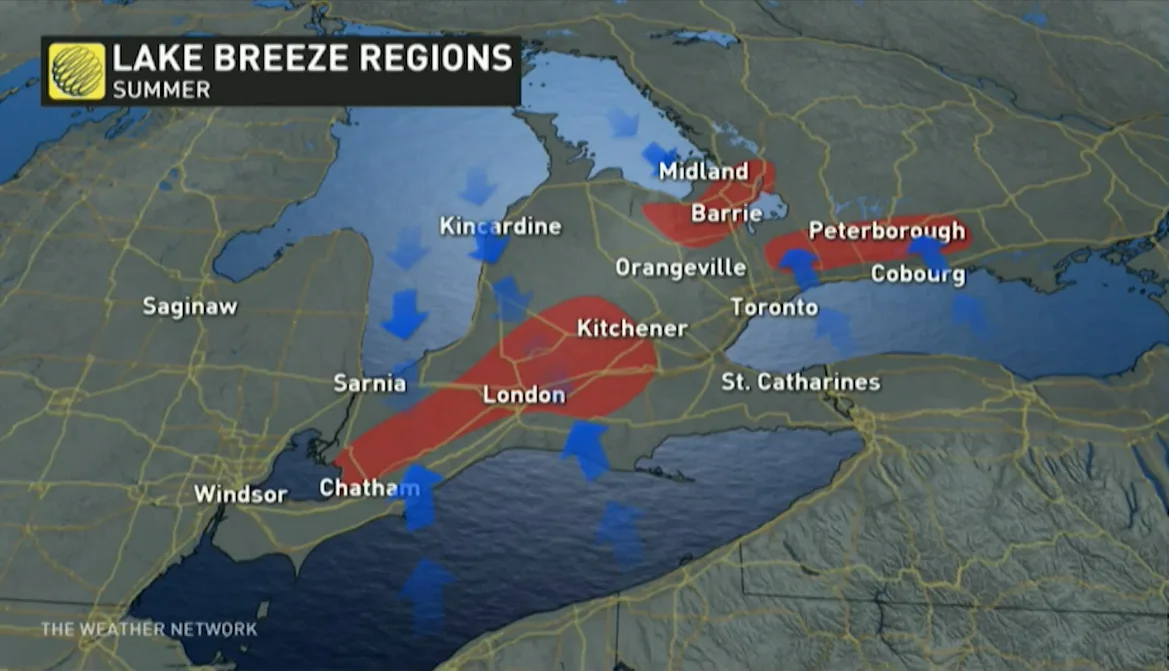
How the Great Lakes can trigger storms on a hot summer day
Lake breezes are a major factor in day-to-day summertime weather across much of southern Ontario
The Great Lakes contain nearly one-quarter of all of Earth’s freshwater supply. These vast and varied bodies of water have a significant effect on weather conditions throughout the year.
We’re most familiar with bands of lake-effect snow burying communities across the region. But the lakes can also provide the spark that unleashes towering thunderstorms on a hot summer day.
MUST SEE: CAPE is the potent fuel that powers a thriving thunderstorm
Lake breezes can drive storm threats
Lake breezes are a way of life around Ontario during the warmer months.

Air warms up faster over land than it does over water. This land-warmed air rises in a hurry, forcing a refreshing breeze of lake-cooled air to rush inland to take its place.
Temperatures can register as much as ten degrees colder by the water as a result of these lake breezes. Folks flock to the lakes on hot summer days to get away from the searing heat just a few kilometres away.
A lake breeze doesn’t stop at the shoreline. These winds continue pushing inland, often acting like miniature cold fronts that scoop up the warm and moist air along their paths. Unstable air rises through the atmosphere to create thunderstorms.
High instability, rich moisture, and shifting winds can turn these storms severe, capable of producing strong winds, hail, torrential rains, and occasionally tornadoes.

RELATED: Why nocturnal thunderstorms can be particularly dangerous
However, there is a flip side to this stormy equation. Cooler temperatures in and over the lakes often protect southern Ontario from nocturnal thunderstorms trying to scoot into the region from the U.S. side of the border.
The pop-up nature of summertime thunderstorms makes lightning safety a paramount concern around this time of year. Make sure you stay weather-aware no matter where you are across southern Ontario throughout the season.
This article was adapted from one previously published on June 1, 2024. Header image created using graphics and imagery from Canva and NASA.
